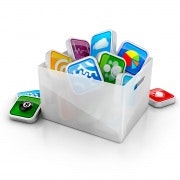The meteoric rise of the emoji

Emojis have become a vital part of our messaging vocabulary over the past few years, and the 850 odd faces, signs and symbols available on Android and iPhone keyboards help us articulate all kinds of things, from ‘you're late', to ‘let's date'. Whatever the message, there is an emoji combination to help you convey what you need to say.
The Unicode consortium, an industry regulator that standardises the emoji sets on smartphone keyboards recently announced that new emojis would be released in June 2015. Five years after the first emoji keyboard for smartphones, fans around the world are rejoicing.
Given the current emoji keyboard has Japanese origins, there are many symbols for situations unique to Japanese culture, such as the Japanese bowing man (I'm sorry), a white flower (good homework) and then there is the delicious but disproportionate amounts of Japanese food, from ramen to sushi, to onigiri.
One common emoji complaint has been regarding the lack of racial diversity, with no characters of African descent, only two Asian men, no Asian woman, and a single Indian man with a turban. The Unicode consortium has promised to address this in 2015, with a diverse range of skin tones, as well as adding a number of new pictures and symbols.
For emoji enthusiasts, speculation is already rife as to what will be added. From tacos to a rumoured ‘Beyonce' emoji, people are waiting with breath that is baited, for the launch of the new keyboard.
It's somewhat fascinating that emojis have become the cultural phenomenon they are today. Looking at their meteoric rise in popularity, we are taken back to the days of the first mobile phones, affectionately now known as ‘bricks'. Japanese and Korean texters began improvising with their keyboard, creating created faces out of punctuation, like \(^ 0 ^)/ that soon became well known combinations to indicate emotion.
In 1999 Japanese phone company Docomo created the first emoji, and years later this became globally available through Unicode. The emoji keyboard launched on Android and iPhone smartphone in 2010, and it quickly established as a relevant, often-humorous language within popular culture, that websites like Gawker and Buzzfeed love to dissect.
A company named ‘Line' soon launched and began selling sets of ‘stickers', much like an emoji, but more detailed, Popularity boomed throughout Asia and beyond with Facebook eventually taking on a similar system, introducing stickers to Facebook messenger.
Emojis have changed the way we communicate, making language more visual and at times, imaginative. While languages like Japanese and Chinese are symbol based, and were the first to create and implement emojis in MMS language, emojis have been quickly universal language, recognised from Morocco to Mauritius and everywhere in-between.
It will be interesting to see how visual keyboards continue to change the way we communicate in the future. Gifs, stickers, emojis and emoticons are propping us up to become a far more visual culture. Perhaps in twenty years we'll be sitting in boardrooms sending futuristic emojis of bunny rabbits, flowers and bowls of rice across the boardroom, with the odd sentence added in here and there for good measure.
Paul Lin is the CEO of the app strategy and developement agency Buuna.













